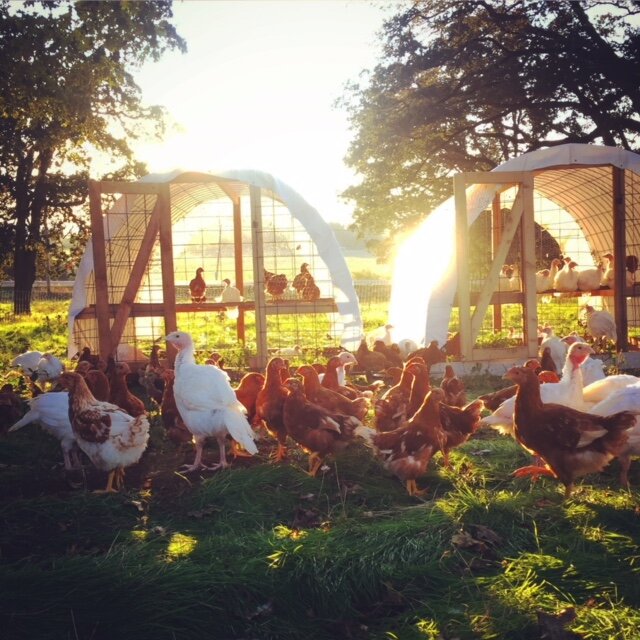5 Thanksgiving staples besides the turkey
/Our Thanksgiving turkeys are living their best lives out on pasture, free-ranging and foraging to their hearts’ content. If you haven’t reserved your turkey yet, head over to our online store stat, because these guys are going fast! While the turkeys may be the highlight of Thanksgiving, don’t forget about these five other staples for the upcoming holidays:
1) Broth packs for making chicken stock. These packs of chicken necks and backs are the perfect base for a nutritious, flavorful stock for use in stuffing, braising veggies or making extra gravy! Our broth packs are in 2-3 lbs packages and available for $7/each.
2) Bacon ends. These are the end pieces left over after the bacon has been sliced. They are perfect for chopping up and sautéing up with your favorite veggies. Brussel sprouts with bacon, anyone? Our bacon ends are in 6-10 oz packages and on special for $8/lb.
3) Sausage. Whether it’s for sausage stuffing or making a delicious breakfast casserole for your visiting family, our pork sausage has you covered. Our sausage is $8 per one pound package.
4) Eggs. Because what is Thanksgiving without all the baked goods, amiright? Also see above: breakfast casserole. Come and grab eggs for $7/dozen.
5) Lard. For the flakiest pie crusts, try using pastured pork lard. If using it for sweet pies seems too weird, don’t overlook the leftover turkey pot pie - one of my family’s favorite parts of thanksgiving! We have lots of pork fat available for $2/lb - you can easily render it into lard (if you are unsure how, ask Jenni or check out this blog post).
Our farmstore is open each Saturday 2-4pm and Wednesday 9am-12pm. We’re also having a special holiday farmstore day on Tuesday, Nov. 26 9am-7pm for turkey pick ups (by pre-order only) and will have all the items above available. Hope to see you soon!






































































